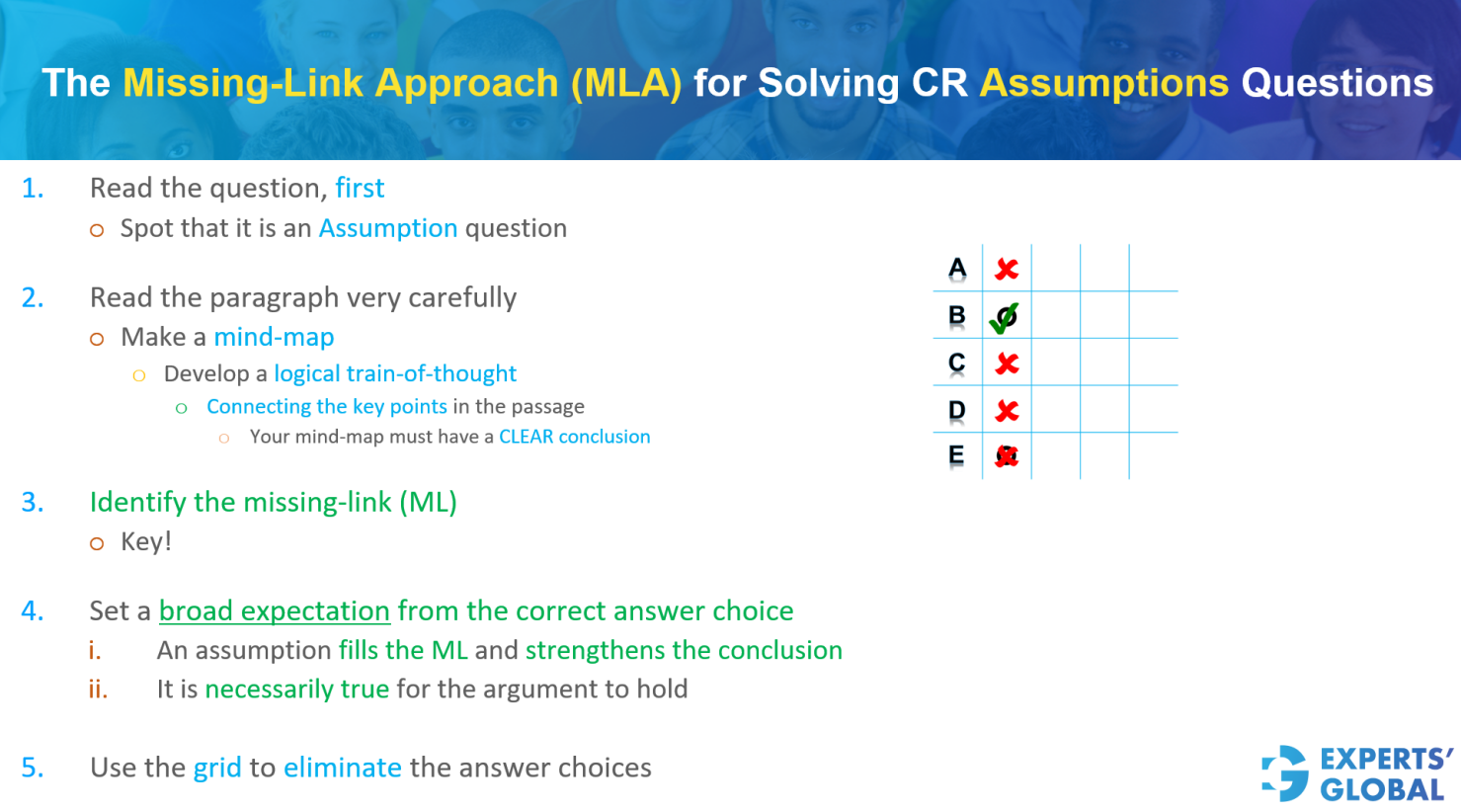Invest 30 seconds...
...for what may lead to a life altering association!
Help Line
- +91.8800.2828.00 (IND)
- 1030-1830 Hrs IST, Mon-Sat
- support@expertsglobal.com
...for what may lead to a life altering association!


CR Assumption questions ask you to identify the unstated idea that must be true for the given argument to work, helping you see the hidden link between the premise and the conclusion. Learning to spot these silent supports builds sharp, confident logical thinking. Careful practice with this question type is an essential part of any thorough GMAT preparation course. This page offers you an organized subtopic wise playlist, along with a few worked examples, for efficient preparation of this concept.
GMAT critical reasoning assumption questions present a passage with a premise, a conclusion, and a clear gap (the missing-link) between the two. The correct assumption is a statement that fills this missing-link, thereby strengthening the conclusion; besides, a correct assumption statement is one that must be true for the argument to hold. This overview explains how to spot assumption by testing for sufficiency as well as necessity: an assumption statement strengthens the argument but if the statement is denied, the argument falls apart. The short video that follows explains the method, applies it to examples, and prepares you to use it in GMAT drills, sectional tests, and full-length GMAT mock tests.


Strengthen statements and assumption both serve to link premises with conclusions, but they differ sharply in how essential they are. A strengthening statement increases the persuasive power of the argument, while an assumption is non-negotiable; remove it, and the reasoning falls apart. This overview explains how to tell the two apart, using clear examples that focus on the idea of necessity. Grasping this distinction sharpens accuracy in GMAT preparation and nurtures more refined evaluation skills that carry directly into the business management journey. The short video below offers a focused look at this idea and illustrates how the GMAT may test it.

Explore the Assumption Negation Test, a sharp and reliable method for identifying necessary assumption in Critical Reasoning. First, single out a possible assumption, then imagine its opposite, and check whether the conclusion still holds; if the argument collapses, the assumption is essential. The video introduces this technique and explains when to use it as a tiebreaker among close answer choices. Viewing questions through this lens deepens structured analysis during GMAT preparation and nurtures rigorous argument evaluation skills valuable in a career in business management. The following short video makes this concept feel familiar and shows how it can be applied on the GMAT.

High quality CR Assumption questions are not available in large numbers. Among the limited, genuinely strong sources are the official practice materials released by GMAC and the Experts’ Global GMAT course. Within the Experts’ Global GMAT online preparation course, every CR Assumption question appears on an exact GMAT like user interface that includes all the real exam tools and features. You work through more than 50 CR Assumption questions in quizzes and also take 15 full-length GMAT mock tests that include several CR Assumption questions in roughly the same spread and proportion in which they appear on the actual GMAT.
All the best!